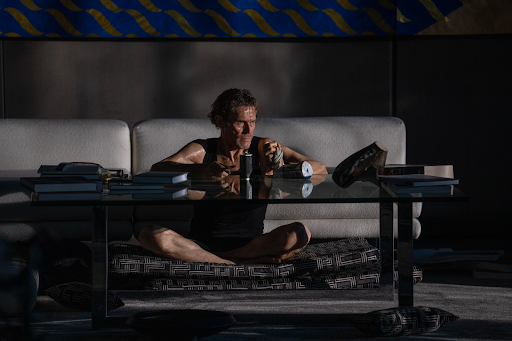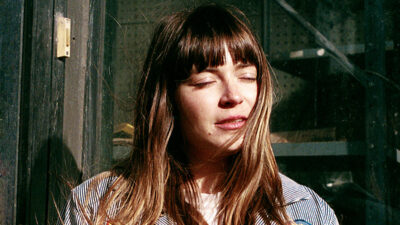Even if it was filmed well before the phrase became a popular joke passed around Twitter, as the meme goes: “INSIDE is a pretty good litmus test for politics: do you regard this man with respect, or disgust?”
Built as a tour de force for Willem Dafoe that neither he nor we need to cement his legacy, INSIDE centers around Nemo, an art thief who, due to complications with his exit strategy, is entrapped in a billionaire’s high rise penthouse for weeks with no escape. The metal front door, bolted shut by a malfunctioning digital security system, remains unbreakable. The glass? Bulletproof. The plumbing? Turned off. With no access to the outside world and having to fight the extreme elements of the apartment’s error-ridden heating and cooling system, what ensues is a one-man-show akin to 127 HOURS or BURIED. INSIDE, at its base level, is attempting to operate as a traditional survival film pushing one man to his natural physical and mental breaking points.
Like any film in the genre, Vasilis Katsoupis’s INSIDE tries to find logic within the course of action. An indoor terrarium becomes one of the few sources of clean water available. A skylight twenty feet above becomes a theoretical source of exit. When perishables dwindle, it’s down to soaking pasta in water overnight for an al dente dinner, or eating the raw fish in the aquarium. That this is a billionaire’s penthouse filled with rare and expensive modern art, both the logic and the home itself can feel nonsensical—a television that has access to the building’s security cameras, a modern fire alarm that brings no outside help, or a freezer that plays the “Macarena” if it’s been open too long, are all best hidden behind Dafoe’s singular magnetism than thought through for too long. 
It doesn’t take more than a cursory reading of INSIDE to see why many have deemed it a COVID film—exploring the toll that being unable to leave the confines of four walls would take on you was once reserved for Bo Burnham and Bo Burnham alone, but now we’ve seen plenty of art created about the topic (many of those stories not also named INSIDE). Certainly you can comfortably view the film through that lens, even if the results feel exhaustingly dull and tiresome in 2023.
But INSIDE is compelling not as an allegory for COVID, but as an allegory for the outside. While so many survival stories push characters to their breaking points, they do so under the most dire of circumstances. The problems in INSIDE, as dire as they are in context, are simply what houseless people experience everyday—extreme heat, extreme cold, lack of medical supplies, lack of food, lack of plumbing or clean water. Take only one of those things in isolation with no immediate and obvious solution and it becomes quicksand to get out of.
I doubt that screenwriter Ben Hopkins or Katsoupis were considering homelessness when they wrote INSIDE, but the drama of watching a man persist against the backdrop of meaningless wealth is certainly compelling—as temperatures reach the 40s in the penthouse and Dafoe has draped himself in mismatched clothing just to stay warm, hoarding objects of no particular significance other than they give him a mental peace, that metaphor becomes fully realized visually; it’s a conclusion and story that is far more meaningful and satisfying a metaphor than “being inside is hard.” We know nothing about Nemo; his life is entirely a mystery. He is simply a man suffering for 105 minutes. And so the litmus test begins: against a backdrop of obscene wealth, does his morality and worth matter when we know nothing about him? That alone isn’t enough to make INSIDE great, but it’s enough to consider it something.
















Comments